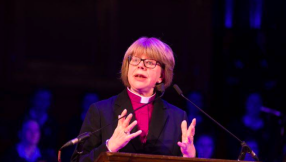Women Priest may take the Lead in the Church
Next year the official projection of the Church of England’s planned ordinations is 124 women and 123 men. In July the Archbishop of Canterbury Rowan Williams, ordained 14 priests in his cathedral. Nine of them were women and only five were men. In the Diocese of Salisbury, 18 women priests and only eight men were ordained last year.
Such a step seems to be changing the structure of the Church of England. As more women priests serve in pastoral ministries, it has drawn a higher degree of female congregations to the Church. Ten years ago, the proportion between male and female congregations was 45% to 55%. Nowadays, it has shifted even more with a 37% to 63% split in favour of women.
Women priests’ appointments in the Church of England were first endorsed in 1992. Later, some women priests went a step further urging for women bishop consecrations. This provoked a division between the conservatives and liberals in the Anglican Communion which has been evident since then.
As the conservatives emphasise on the theology behind women bishop consecrations, it seems that they will go as far as to consider quitting the Anglican Communion if the Church passes the green light for women bishop. Currently about 300 clergymen are in this status, indicating that if women bishops are successful in their bid it may threaten the size of ministries of the Church.
Many conservative Anglicans consider the increase in female priesthood as a “feminism movement”. Robbie Low, a traditionalist cleric on the editorial board of the church magazine New Directions, said, “Men see a decreasing place for themselves in an organisation dominated by militant feminism.”
However, many church ministers may have put more concern on the proper interpretation of scriptures with a reference to the cultural changes in this modern era. They said that trend of increasing female priesthood in the Church indicates that priesthood will become increasingly a female profession just like nursing and teaching.
Christina Rees, a supporter of women priesthood in the General Synod, praised the role of women priests.
“The characteristics associated with the Christian lifestyle, namely patience, gentleness and kindness, are normally associated with feminine qualities. Jesus showed many feminine traits as well as masculine ones. The church could do with a strong dose of feminisation to help it to become more Christ-like.” she said.
Nevertheless, as the debate over women bishop consecration goes on, this trend is unfavourable to the relationship between conservatives and liberals in the church. Some commented that it will be one more step on the road to the division of the church.
At present, about a fifth of Church of England priests are women. About half of those in training for the priesthood are women. The trend of increasing female priests in the Church is quite obvious. As an outstanding denomination inherited both the Catholic and Protestant culture and practice, the trend in the Church of England will not only affect the politics within the church but even the rest of the world.













